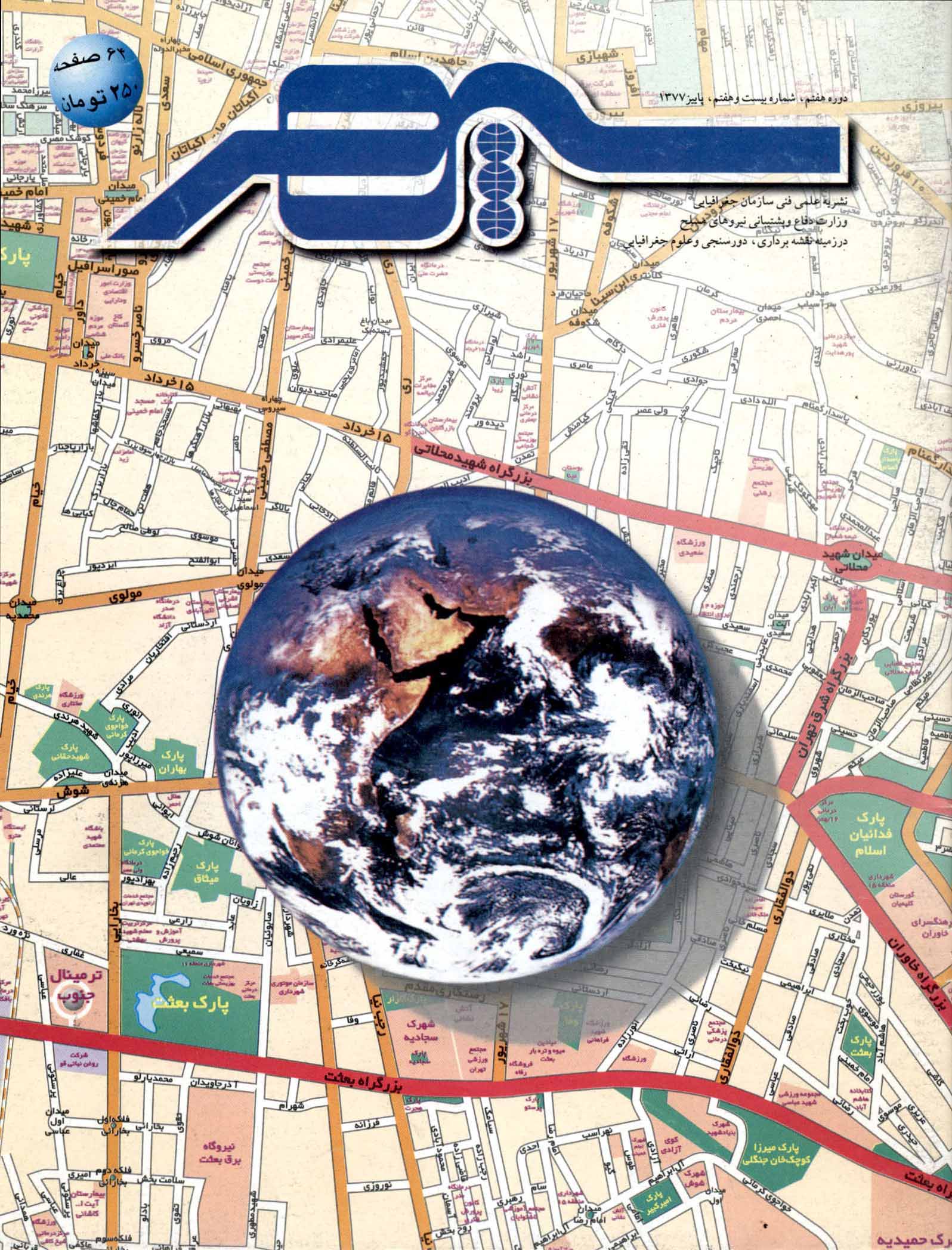نوع مقاله : مقاله پژوهشی
نویسنده
گروه آموزشی مهندسی نقشه برداری دانشگاه صنعتی خواجه نصیرالدین طوسی
چکیده
این مقاله نتایج یک کار اجرائی تطبیق سه بعدی خودکار را بیان می کند. در واقع این مقاله بیانی است از یک تحقیق که شامل دو بخش عمده می باشد.
اولین بخش آن مربوط است به اجرای تطبیق سه بعدی خودکار که برای یک آزمایش عکسبرداری فاصله کوتاه رقومی (Digital Close Range Photogrammetry) انجام پذیرفته است. اجزاء تشکیل دهنده این آزمایش متشکل از دو دوربین CCD با قدرت تفکیک 580×758 جزء عکسی (Pixels) که برروی یک میله افقی به طول تقریبی cm70 سوار شده اند. این دوربین ها در فاصله سه متری از جسم قرار گرفته اند. یک نوع جدید از نشانه ها که برای شناسایی و استخراج خودکار نقاط کنترلی از عکس ها، توسط نویسنده ابداع گردیده اند، برروی و اطراف منطقه مورد آزمایش قرار داده شده اند. یک برنامه رایانه ای برای شناسایی و استخراج خودکار این نشانه ها توسط رایانه، ابداع گردید.
برنامه قادر است یک شکل فضایی سه بعدی (Model) از دو تصویر دارای پوشش بصورت خودکار بسازد. روش اجرایی براساس روش سرشکنی دسته شعاعی (Bundle Block Adjustment) است.
دومین آزمایش جهت کار با عکس های هوایی رقومی شده، اجرا گردید. نشانه ها بر روی عکس های هوایی تعبیه گردیده این نشانه ها بجای نقاط نشانه عکسی (Fiducial Marks) و در محل نقاط کنترل زمینی قرار داده شده اند. ایم آزمایش با آزمایش اول یک مقدار متفاوت است چون که برنامه اول توجیه داخلی را انجام بدهد و سپس توجیه نسبی و مطلق.
کلیه اهداف این مقاله یک روشی را بیان می کند که برای نائل شدن به انطباق خودکار در عکسبرداری رقومی مورد استفاده قرار می گیرد.
عنوان مقاله [English]
Implementation of a Three-Dimensional Matching for Digital Photography
نویسنده [English]
- Amir Saeed Homaiinejad
Educational Department of Surveying, K. N. Toosi University of Technology
چکیده [English]
This paper presents the results of a practical automatic three-dimensional matching project. It consists of two major parts.
The first part is related to the automatic three-dimensional matching project implemented for a digital close range photography test. The components of this test include two CCD cameras with a resolution of 758×580 Pixels set on a 70cm horizontal bar. These cameras are set at a distance of 3m from the object. A new type of signs which have been devised for identification and extraction of control points from photos have been set on an around the area under examination. A computer program was prepared for automatic identification and extraction of these signs by computer.
The program is able to create a three-dimensional spatial shape (a model) from two images with cover automatically. The practical method is based on the Bundle Block Adjustment.
The second test was carried out with the aim of working with digitalized aerial photos. These signs have been set in place of fiducial marks and at ground control points. This test is somehow different from the first test, because in this case the program must first carry out the internal justification and then the relative and absolute adjustments.
In general, this paper discusses a method which is used for achievement of automatic matching in digital photography.

